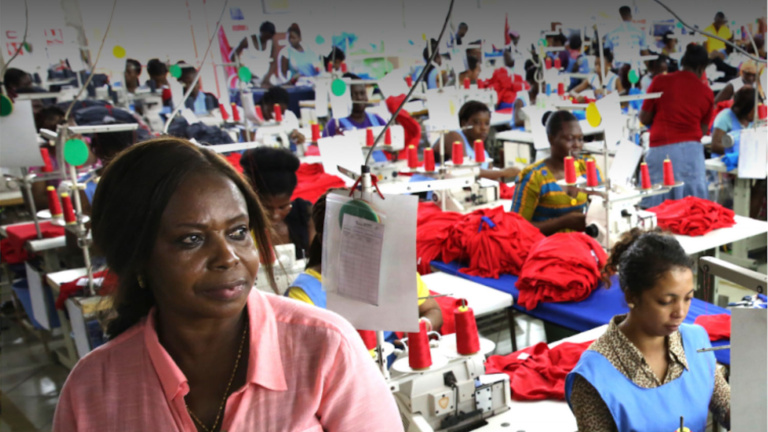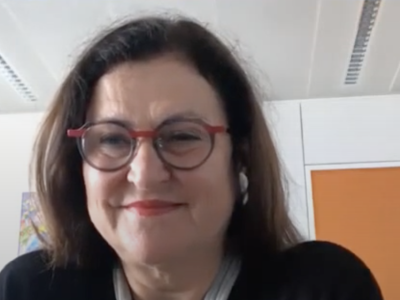
Engaging the private sector in blended finance
To leverage the private sector as a source of financing for the SDGs, blended finance should be used to produce attractive investment opportunities. This requires a better understanding of potential capital providers and their mandates, constraints, motivations, and investment preferences.
The private sector is, in many ways, the elusive yet critical ingredient in achieving the Sustainable Development Goals (SDGs) by 2030. The SDGs lay the path for creating a world that is socially fair, environmentally secure, economically prosperous, and more inclusive; but achieving them will require a new level of cooperation between the public, philanthropic, and private sectors. The United Nations estimates that the annual funding required to achieve the SDGs is US$ 3.9 trillion, but current levels of official development assistance (ODA) and international investment towards the SDGs leave an annual funding gap of US$ 2.5 trillion. This gap cannot be closed without leveraging the private sector.
The raison d’être of blended finance
Leveraging the private sector for global development is not new. Multilateral development banks (MDBs) and development finance institutions (DFIs) have long worked with the private sector, both investing in private sector companies in developing countries and leveraging the domestic and international private sector as co-financiers. But the adoption of the SDGs has led to a spike in the urgency with which development agencies – both public and philanthropic – seek to engage the private sector. Increasingly these agencies are looking towards blended finance – the strategic use of public and/or philanthropic funding – to attract the private sector to invest in SDG-related investments in developing countries.
Figure 1: Survey of development practitioners
 Source: From convergence’s report, “The State of Blended Finance’
Source: From convergence’s report, “The State of Blended Finance’
Blended finance offers an innovative approach to mitigating risk and managing returns to create competitive investment opportunities that can crowd in commercially-motivated capital at scale. Compared to impact investing and corporate social responsibility (CSR) activities, blended finance has the potential to unlock vast capital flows because (1) the private sector investor does not need to be impact-motivated and (2) investment opportunities are competitive with – or superior to – market alternatives. This means it can help public and philanthropic parties achieve their development objectives, while the private sector achieves their risk-adjusted return requirements.
To illustrate the potential of blended finance, an allocation of 10% of the Organisation for Economic Co-operation and Development’s Development Assistance Committee’s (OECD DAC) annual funding (i.e., US$ 14 billion) to blended finance solutions with an average leverage ratio of 4.7 could crowd-in US$ 67 billion per annum of financing to developing countries. This is twice the current amount of annual aggregate MDB and DFI financing to the private sector in developing countries.
But who is the private sector?
Over and over, the global development community references the private sector as if it is a homogenous group of potential capital providers. Yet the private sector is a diverse group that face vastly different motivations and constraints when it comes to contributing to achieving the SDGs in developing countries. At the highest level, the private sector can contribute to the SDGs as corporates or capital providers. Corporates (e.g. corporations, manufacturers, and project developers) contribute to the SDGs through direct investment and supply chain integration, particularly in industries like agriculture and food, renewable energy, and infrastructure. Capital providers (e.g. commercial financial institutions, private venture companies) contribute to the SDGs through the provision of long-term financing to support economic activities in developing countries.
Figure 2: Illustrative sources of financings for the SDGs, by Convergence

Source: Convergence
It is the capital providers, particularly the institutional investors, that are increasingly seen as a potentially major source of long-term financing for developing countries. Institutional investors are large companies that have considerable cash reserves that need to be invested. There are six institutional investor types – i) asset /wealth managers, ii) commercial and investment banks, iii) insurance companies, iv) pension funds, v) private equity firms, and vi) sovereign wealth funds – who together represent approximately US$ 200 trillion in assets under management (AUM).
It is ambitious but not unrealistic that this scale of private investment could be directed towards the SDGs with the right investment opportunities, incentives, and enabling environment. In fact, these institutional investors already allocate over US$ 2 trillion – just over 1% of their total assets – to alternative assets (more unconventional investments that are not stocks, bonds, and cash) in developing countries and around US$ 6 trillion in alternative asset classes aligned with blended finance more broadly. Blended finance can be deployed to direct a portion of these existing capital flows towards lower income countries (e.g., Sub-Saharan Africa) and higher impact sectors (e.g., healthcare).
Figure 3: Private investor segments

Source: From Convergence’s report, “Who is the private sector?”
Further, institutional investors have invested directly in blended finance transactions in the past. Based on Convergence data, banks, asset/wealth managers, and private equity firms are the most active private sector investors, followed by pension funds and insurance companies. Banks and asset/wealth managers tend to participate in large transactions (i.e. over US$400 million in total size), while other segments, like insurance companies, participate in relatively smaller transactions (i.e. between US$100-200 million in total size). These numbers are expected to increase as private investors are looking to invest more in both alternative asset classes and developing countries as a way to diversify their portfolios and capitalise on the low interest rate environment globally.
Getting aligned with investors
In principle, blended finance holds great potential as an approach to more effectively and efficiently leverage the private sector. In practice, institutional investors have invested in one or two transactions, but few have participated regularly in blended finance transactions. To get the private sector – and specifically, institutional investors – onboard, blended finance must produce assets that they are motivated to invest in. To this end, there are three main action areas for global development policymakers: (1) engage with investors, (2) support an enabling environment, and (3) build best practice.
Engage with Investors
Policymakers need to get to know the investors much better, including their i) motivations and constraints, ii) allocations and capacity, and iii) language. Most importantly, institutional investors are bound by obligations to their stakeholders to fulfill their investment mandates, including meeting certain financial return thresholds. Therefore, even where a social, environmental, or impact mandate may be of interest, they cannot sacrifice financial returns. Second, investors vary greatly among and within the segments in their allocation to and capacity for alternative assets in developing countries (i.e. blended finance-related assets). Investors with low allocation to alternative investments in developing countries may simply lack the capacity required to participate in blended finance. Finally, public and philanthropic funders should communicate in the language of investors (i.e. the language of risks and returns) and focus on the credible, commercial investment opportunities that are presented by the SDGs.
Support an Enabling Environment
Institutional investors face a plethora of global and national policies and regulations, which have strengthened following the 2008 financial crisis. While the objective of this oversight is to ensure a stable global financial system, policy and regulation – such as Basel III and Solvency II – can be a barrier to increasing investment flows to developing countries, reducing investor appetite to take risks in markets with high perceived and real risks. In addition to an enabling regulatory environment, policymakers can also foster an enabling cultural environment. Policymakers should continue to advance efforts to describe and demonstrate the business opportunities made available by the SDGs. There are many examples of investors across the six high-potential segments (e.g., Credit Suisse, J.P. Morgan, and UBS) demonstrating an appetite to explore investment approaches aligned to the SDGs, which should be held up as benchmarks for their industries.
Figure 4: Impact of policy and regulation on investor segments
 Source: From Convergence’s report, “Who is the private sector?”
Source: From Convergence’s report, “Who is the private sector?”
Build Best Practice
Policymakers need to identify and replicate best practice blended finance structures as well as support data collection and transparency. Public and philanthropic funders should collaborate on a strategic number of well-proven blended finance solutions, while also promoting standardisation and reducing complexity. It is critical that this work be undertaken in close consultation with private sector investors to ensure resulting transactions are aligned to their interests. As blended finance matures and both the impact and financial returns can be identified, it is critical to collect and disseminate this information. One of the main factors influencing the decision-making of private investors is past performance. There is currently a paucity of return data on blended finance transactions, in particular return data for the commercial layers of capital in blended finance transactions, which can be a hindrance for attracting new investors into the field.
Homework for policymakers
For the SDGs to succeed, the private sector, and specifically capital providers, will need to play a much bigger role. But this won’t happen unless policymakers have a better understanding of the private sector landscape, especially the mandates, constraints, motivations, and preferences of different investor types. A strong and more nuanced understanding of the private sector will allow the public sector to more strategically engage and leverage the private sector. This is just one step in achieving a new level of global cooperation that will be critical to the success of the SDGs.
About the Author
As Associate, Justice Johnston focuses on documenting case studies on blended finance transactions, coordinating workshops and webinars and building out Convergence’s database of past blended finance transactions.
Twitter: @social_justiced
Email: justice.johnston@convergence.finance
Read the full magazine issue








